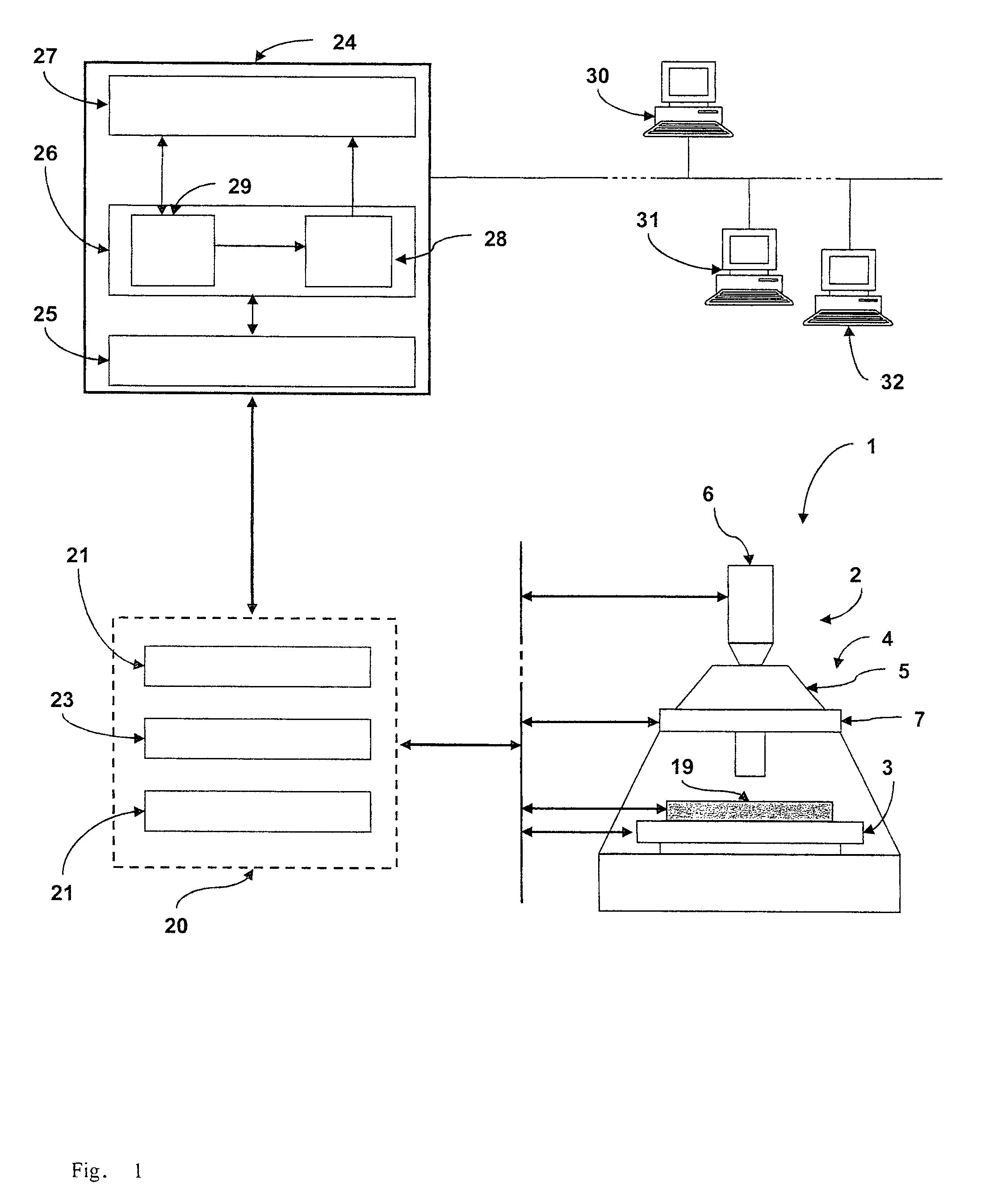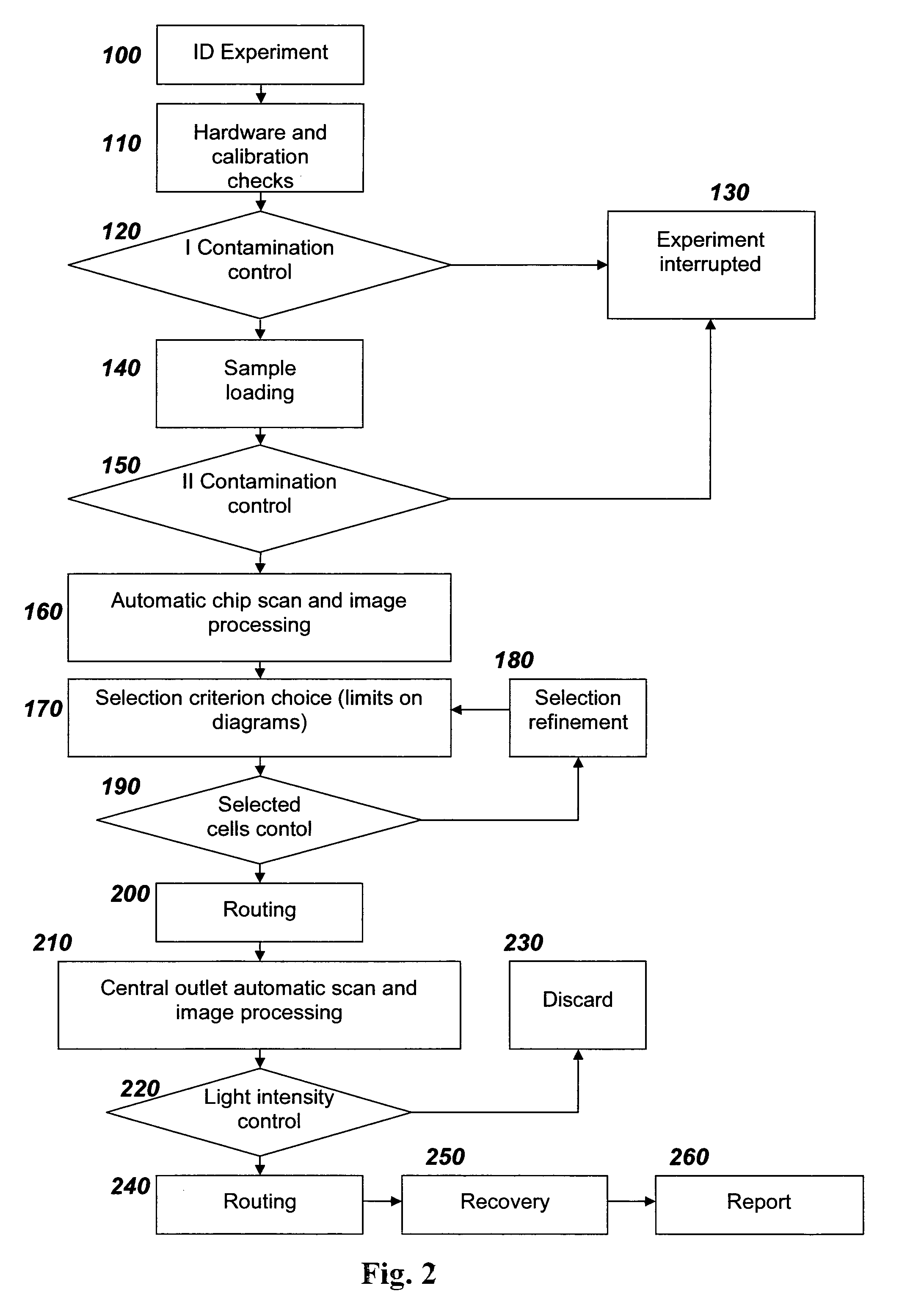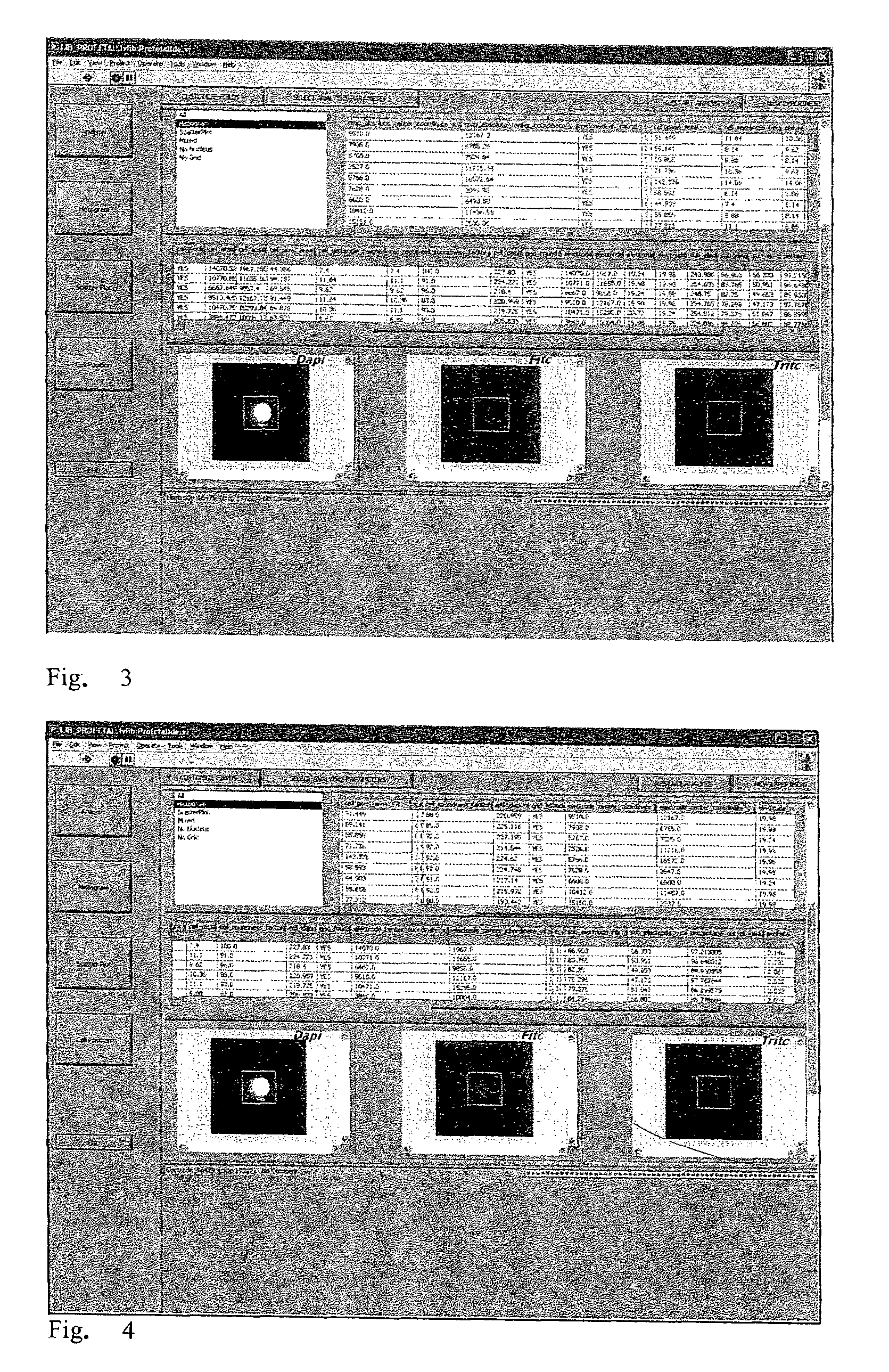Method and apparatus for the identification and handling of particles
a particle and particle technology, applied in the field of methods, can solve the problems of insufficient selection procedure, inability to successfully complete subsequent analyses, and inability to identify too few useful cells,
- Summary
- Abstract
- Description
- Claims
- Application Information
AI Technical Summary
Benefits of technology
Problems solved by technology
Method used
Image
Examples
example 1
Elimination of Clusters
[0094]One of the many potential applications of the method according to the present invention is elimination from a particle population of particles grouped to form clusters if their presence is not desired, for example in the case of subsequent use of single particles only. This occurs, for example, in the case of separation of living cells: if the operator wishes to perform a subsequent analysis on single cells, the presence of clusters in the sample could alter acquisition of the data or even the result of the test.
[0095]In this case the operator can observe (FIG. 3), via the interface implementing the method according to the invention, the particles and particle clusters that constitute the sample, and identify a plurality of parameters for each of them. In particular, in this case, the radius of the particle or cluster will be measured, in combination with the corresponding coordinates with respect to the surface of the handling device, and a roundness fa...
example 2
Prenatal Diagnosis
[0098]For a variety of prenatal diagnosis protocols it is necessary to provide a concentration of a sample of maternal blood, selecting within it the fetal erythrocytes and then performing genetic analysis on them. For said purpose, it is substantially necessary to identify the cells with nucleus, of fetal and not maternal origin. This type of determination can be performed by marking the cells with one or more fluorescent markers, for example a first marker (DAPI) which binds to the nucleus of a cell and a second marker (FITC) which binds selectively to antigens of fetal and not maternal origin. By detecting the fluorescence intensity for the two markers, at two separate respective wavelengths, it is possible to identify the cells for which both markers are present. Since fluorescence detection could be subject to error if cells present phenomena of non-specific autofluorescence—i.e. detectable at any wavelength—it is preferable to perform a third fluorescence det...
PUM
| Property | Measurement | Unit |
|---|---|---|
| width | aaaaa | aaaaa |
| threshold | aaaaa | aaaaa |
| surface | aaaaa | aaaaa |
Abstract
Description
Claims
Application Information
 Login to View More
Login to View More - R&D
- Intellectual Property
- Life Sciences
- Materials
- Tech Scout
- Unparalleled Data Quality
- Higher Quality Content
- 60% Fewer Hallucinations
Browse by: Latest US Patents, China's latest patents, Technical Efficacy Thesaurus, Application Domain, Technology Topic, Popular Technical Reports.
© 2025 PatSnap. All rights reserved.Legal|Privacy policy|Modern Slavery Act Transparency Statement|Sitemap|About US| Contact US: help@patsnap.com



